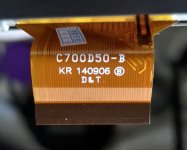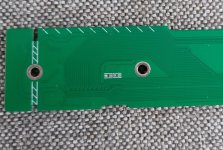n0p
Experienced Member
After having conversation with @sorphin i decided to check what actual limits for floppy in DOS 3.31 are.
So i changed limits in my media detection routine, rewrote chs to lba conversion and made some test with DOS format.
As a side effect - i found that i completely overlooked the fact that media info can be changed after format and my emulation needs to acknowledge that.
Fixed (media format is reread after boot sector change, but to be absolutely sure - replug the drive)
DOS format didn't accept sector value bigger than 63 (6 bit value, so it's max), and maximum tracks number is 346 - bigger values give divide overflow in format command itself. Heads are always 2.
This gives us a 22MB "floppy" drive, which can be created and used in DOS 3.31.
Next, will it boot? No
Biggest bootable "floppy" i could make is 80 tracks, 25 sectors, that's a bit less than 2MB.
BIOS changes pushed:

 github.com
Prebuilt version attached
github.com
Prebuilt version attached
So i changed limits in my media detection routine, rewrote chs to lba conversion and made some test with DOS format.
As a side effect - i found that i completely overlooked the fact that media info can be changed after format and my emulation needs to acknowledge that.
Fixed (media format is reread after boot sector change, but to be absolutely sure - replug the drive)
DOS format didn't accept sector value bigger than 63 (6 bit value, so it's max), and maximum tracks number is 346 - bigger values give divide overflow in format command itself. Heads are always 2.
This gives us a 22MB "floppy" drive, which can be created and used in DOS 3.31.
Next, will it boot? No
Biggest bootable "floppy" i could make is 80 tracks, 25 sectors, that's a bit less than 2MB.
BIOS changes pushed:
GitHub - jinshin/8088_bios at settings
BIOS for Book8088. Contribute to jinshin/8088_bios development by creating an account on GitHub.
Attachments
Last edited:




